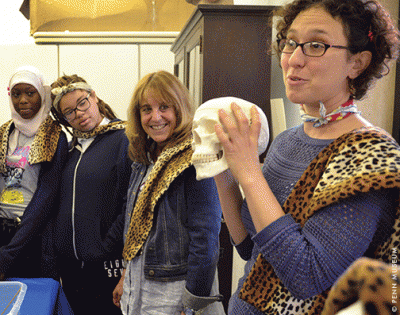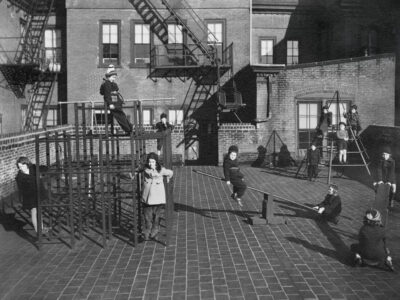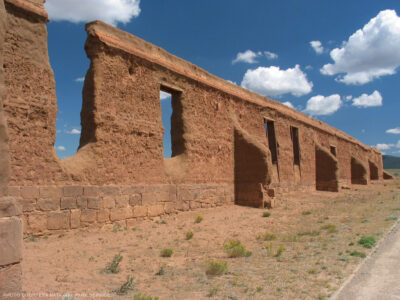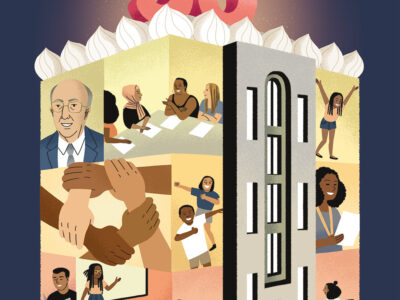
“Most importantly, thank you for making it free,” said Philadelphia School District Superintendent William Hite. He was referring to “Unpacking the Past,” a new three-year, $2.2 million, privately funded educational outreach program for public-school students at the Penn Museum of Anthropology and Archaeology.
It’s only natural that the head of Philadelphia’s cash-starved school system—where just keeping paper in supply is a challenge—would be especially pleased about the zero-cost part of the initiative. But there were many other elements worth celebrating, too, which Hite and other speakers touched on at the program’s October unveiling, held under the watchful gaze of the enormous 19th Dynasty Sphinx that dominates the Museum’s lower Egyptian gallery.
“Unpacking the Past” is open to seventh graders—whose curriculum includes the study of ancient cultures—in district-run schools, as well as at the Knowledge is Power Program (KIPP) and Mastery Charter Schools. Students will receive specially designed interactive tours of Museum exhibits keyed to Core Curriculum standards, and participate in hands-on projects like the Mummy Makers workshop, in which they’ll be taken through the mummification process—from brain removal to the heart-weighing ceremony—using a “custom-made dummy mummy.” These visits will be supplemented by preparatory work in their classrooms led by Museum educational staff, and by professional development opportunities at the Museum for their teachers. To foster continuing engagement, students will also receive free annual family memberships to the Museum, renewable for a second year with three or more visits.
GRoW Annenberg, an arm of the Annenberg Foundation, provided a $1 million lead challenge-grant to get the program off the ground, and fundraising is continuing to cover the overall cost. Donors including Diane v.S. and Robert Levy WG’74, the Museum’s Women’s Committee, and PECO have added more than $200,000 in matching funds.
“History comes to life when you’re actually studying real objects,” said Julian Siggers, the Williams Director of the Museum. “Unpacking the Past” will “make a real difference in the educational experiences of Philadelphia schoolchildren in the seventh grade, as well as their teachers, their siblings, and their parents.
“The program will create—well, maybe a few more archaeologists—but also something more important,” Siggers added. “We believe that this program teaches analytical skills applicable to many other subjects, [and will] spark something vital to success: a lifelong love of learning and, we hope, of museums, to serve these children for years to come.”
The museum’s strategic plan places a high premium on community engagement, and increasing access to Penn’s educational resources is a key goal of the Penn Compact 2020 as well, Siggers noted.
In her remarks, Penn President Amy Gutmann emphasized the particular importance of opening the Museum’s treasures to children and families in a time of budget cutbacks for arts and culture in the schools.
Today’s students are “future doers, future thinkers, and future leaders,” Gutmann said. “In order to prepare our future they—and we—have to make sure they understand the past.”—J.P.




